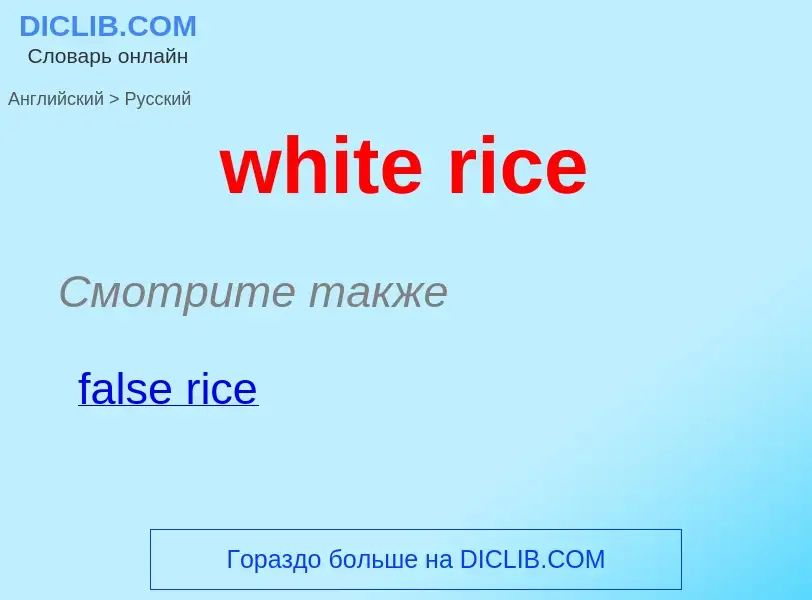Translation and analysis of words by ChatGPT artificial intelligence
On this page you can get a detailed analysis of a word or phrase, produced by the best artificial intelligence technology to date:
- how the word is used
- frequency of use
- it is used more often in oral or written speech
- word translation options
- usage examples (several phrases with translation)
- etymology
white rice - translation to English
Definition

Wikipedia
White rice is milled rice that has had its husk, bran, and germ removed. This alters the flavor, texture and appearance of the rice and helps prevent spoilage, extend its storage life, and makes it easier to digest. After milling (hulling), the rice is polished, resulting in a seed with a bright, white, shiny appearance.
The milling and polishing processes both remove nutrients. An unbalanced diet based on unenriched white rice leaves many people vulnerable to the neurological disease beriberi, due to a deficiency of thiamine (vitamin B1). White rice is often enriched with some of the nutrients stripped from it during its processing. Enrichment of white rice with B1, B3, and iron is required by law in the United States when distributed by government programs to schools, nonprofits, or foreign countries. As with all natural foods, the precise nutritional composition of rice varies slightly depending on the variety, soil conditions, environmental conditions and types of fertilizers.
Adopted over brown rice in the second half of the 19th century because it was favored by traders, white rice has led to a beriberi epidemic in Asia.
At various times, starting in the 19th century, brown rice and other grains such as wild rice have been advocated as healthier alternatives. The bran in brown rice contains significant dietary fiber and the germ contains many vitamins and minerals.
Typically, 100 grams of uncooked rice produces around 240 to 260 grams of cooked grains, the difference in weight being due to absorbed cooking water.

